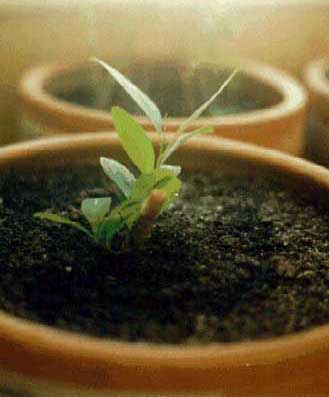In its native habitat, the coca plant is resistant to drought and disease. It needs no irrigation. The introduction of coca to England was pioneered early in nineteenth century by the Royal Botanical Gardens at Kew; but the plant has yet to find a place in orthodox Western horticulture. Erythroxylum Cataractarum
In the 1980s, millions of drug-naive Americans were introduced to 'decocainised' coca tea imported from South America. In Peru, the legitimate cultivation of coca, and the production of all cocaine licensed for pharmaceutical export, was controlled by the government's own National Enterprise Of Coca. In a bid to expand and diversify its product range, the National Enterprise Of Coca promoted the benefits of coca in the form of a wholesome traditional beverage. This state-sponsored export-drive was successful: overseas demand proved brisk. From 1983, 'Inca Health Tea' sold especially well in the North American market. Lemongrass and other flavours were added to cater to American palates. Soon mate de coca could be bought in tea-shops and grocery stores in US cities.
Mate de coca is an agreeable and invigorating mood-brightener. It is also benign: patients at the San Francisco National Addiction Research Foundation, for instance, were encouraged in the 1980s to drink as much mate de coca as they desired to help wean themselves off cocaine. When consumed in generous quantities, the tea is good at easing drug-cravings; but this is because the average tea-bag contains 5 milligrams of cocaine.
Inca tea is now illegal in the USA.
dave@bltc.com
More
HedWeb
HerbWeb
BLTC Research
Paradise-Engineering
The Hedonistic Imperative
When Is It Best To Take Crack Cocaine?
The Good Drug Guide
The Responsible Parent's Guide To Healthy Mood Boosters For All The Family


